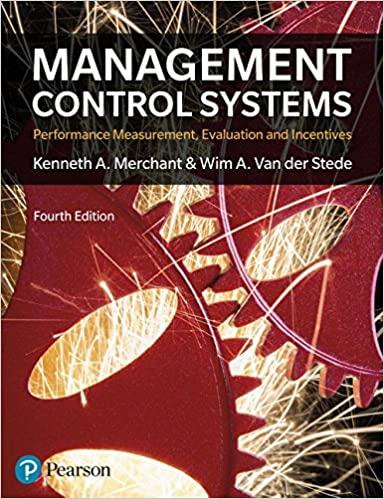Question
Farmers in Africa need widely available access to low-cost mechanization tractor services, but there needs to be a coordination problem of getting enough tractors to
Farmers in Africa need widely available access to low-cost mechanization tractor services, but there needs to be a coordination problem of getting enough tractors to enough fields at the right time. At the same time, tractor utilization rates average only 30% of optimal use rates without the use of technology. Tractor owners need technology to better match their available tractor utilization, with farmers willing to pay for those services. The One Tractors solution to these dual problems, which are smallholder farmers need to coordinate with tractor owners and tractor owners needs for an expanded customer base, GPS tracking, and security, was to create a self-contained, GPS-enabled telematics device, a smart box, that permanently attaches to the Tractor and automatically connects the Tractor to the cloud whenever it is in cellphone service range. This internet of things solution allows the platform to automatically route tractors through their daily plowing schedule, all while letting owners track usage hours and locations in real-time. The One Tractor, a for-profit technology platform, solves these complex coordination platforms in exchange for a commission from the earnings of tractor owners from the platform. Tractors are GPS enabled, and they are automatically paired with farms based on availability and geography. The Maps app automatically schedules tractor drivers for various routine tasks based on route optimization. The One Tractor must gather and increase the demands from farmers. They do this primarily through their network of booking agents. Booking agents are local entrepreneurs who coordinate with farmers in their area to build trust and facilitate direct bookings. The One tractor has frequently been called Uber for tractors,'' but actually they collect critical data, aggregate it, and disseminate it throughout the entire agriculture ecosystem, which is distinctly different from how Uber operates. The app charges a commission to the asset owner and the commission is about 10% for the tractor owner for The One Tractor. When combined with advanced data sources such as weather reports, satellite imagery, soil sample data and historical crop data, The One Tractor acts as a data provider throughout the value chain. Farmers learn about historical weather trends and gain planting insights based on their soil types. Tractor owners can plan tractor deployment based on when fields will be plowed in different regions. Different regions and crops necessitate different planting schedules, increasing the tractors' utilization rate. Banks and other lenders can track the utilization of the machines they fund to predict loan repayments and prepare for potential loan defaults. In addition, how successful booking agents can access financing to buy their own tractors because they have demonstrated the ability to generate demand from farmers. Lenders can reduce loan risk based on tractor utilization and expected demand in the area where the tractor operates. The One Tractor pulls that information, and this historical data becomes a key source of value and competitive advantage for The One Tractor. However, there are a number of hurdles in validating the collection of this data from all the sources that The One Tractor interacts with, such as farmers, tractor dealers, tractor owners, and booking agents. One solution for validating data collected from partners across the value chain is to use blockchain. These blockchain and data consolidation efforts include work from multiple partners at the forefront of todays tech landscape such as IBM, Mastercard, and Aeris. This blockchain will provide a tamper-proof definition of demand-side and supply-side workflows from tractor request to fulfillment, payment for services, and distribution of proceeds, authorized access to services and documents within the workflow, logging of all workflow-related approvals including booking, invoicing, etc.).
Simplified Value Chain
Farmers <->Booking Agents <->The One Tractor Platform <->Tractor owner <-> Tractor Manufacturers and Dealers <-> Tractor Finance
Question
1. Strategically speaking, how strong is the competitive advantage of the Hello Tractor platform? Why?
2. Where should The One Tractor devote its limited resources going forward? Which projects or areas of growth or development should it focus on? And most importantly, why? Please choose ONLY ONE of the following potential strategic actions to discuss:
1. Expanding to new agriculture markets (i.e. countries)
(or)
2. Growing existing markets through:
Increasing outreach to farmers (how?)
Recruiting tractor owners to be HT customers?
Recruiting investors who do not currently own tractors but may want to based on the potential return on investment?
(or)
3. Financing and facilitating new tractor sales
Helping high-value potential tractor owners access financing?
Providing data and analytics for lenders?
How could tractor financing move HT forward, strategically?
Step by Step Solution
There are 3 Steps involved in it
Step: 1

Get Instant Access to Expert-Tailored Solutions
See step-by-step solutions with expert insights and AI powered tools for academic success
Step: 2

Step: 3

Ace Your Homework with AI
Get the answers you need in no time with our AI-driven, step-by-step assistance
Get Started


